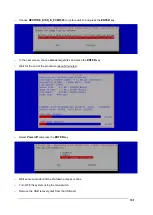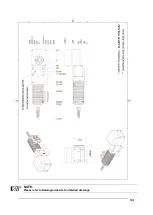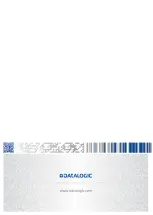
98
ACCIDENTAL VISION OF DIRECT REFLECTED RADIATION
Assuming a direct exposure of 10 seconds at a nominal distance of 0.5 m (worst case), it is possible to
calculate the N.O.H.D. shown in the table below.
The safety goggles must have an optical density rating which assures the laser radiation will be reduced
below the maximum acceptable level, previously calculated according to the formula below:
O.D.
= log (H/EMP) where EMP is the Maximum Permissible Exposure and H is the radiant exposure.
Source
N.O.H.D. (Nominal Ocular Hazard Distance)
O.D. (Optical Density)
Vlase
TM
IR 10 W Marker
with F-Theta 160 mm
25,2 m
> 3,70
Vlase
TM
IR 20 W Marker
with F-Theta 160 mm
28,8 m
> 3,82
FILTER SCALE INDEX OF THE PROTECTION GOGGLES
The scale index L of the filters indicates the stability against radiation, which means the ability of the filter to
maintain its characteristics unchanged. This stability is certified by the producer according to the EN 207 with
tests conducted for 10 seconds or 100 pulses.
It is then necessary to verify that the scale index of the adopted filter is stable for this period and to foresee
an adequate overrating in order to make sure that it could last longer than the accidental exposure period.
In case of exposure at 0.5 m for 10 seconds the suggested optical density for safety googles is CLASS L4.
Summary of Contents for VLASE IR 1PWX-TLS2
Page 1: ...USER S MANUAL VLASETM IR ...
Page 34: ...VLASETM IR 34 2 2 6 CONNECTION EXAMPLES Figure 27 Connection examples ...
Page 85: ...85 EXTERNAL LABEL PLACING Figure 67 Positioning of external labels rack ...
Page 86: ...86 Figure 68 Positioning of external labels resonator ...
Page 90: ...90 BLOCK DIAGRAM VLASETM SAFETY LOGIC DETAILS FOR AUTOMATIC PRODUCTION LINE ...
Page 108: ...108 APPENDIX G MECHANICAL DRAWINGS ...
Page 109: ...109 NOTE Please refer to Datalogic website for detailed drawings ...
Page 112: ......















































